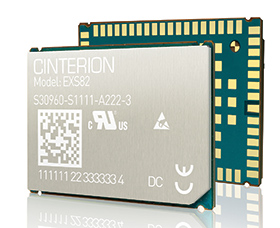

One of the first IoT applications emerged in the 1980s when programmers at Carnegie Mellon University hooked up a vending machine to the Internet and checked in remotely to see if a cold soda was available. The IoT didn’t become a ‘thing,’ however, until the 2010s and by the 2030s, there will be far more connected devices than humans on the planet!
As hundreds of billions of new industrial IoT solutions come online in the years to come, there’s an incredible hype around high-capacity 5G networks, which promise to support everything from remote surgery applications, to autonomous vehicles and video home security solutions. But for many countries, the cost to roll out these new networks will be prohibitive for many years. Add to that the ongoing data and maintenance costs of 5G and it’s easy to understand why many implementers are in no hurry to upgrade to next-generation technology.
LPWAN: A gateway to the future
Enter low power wide area networks (LPWANs). The majority of IoT devices, especially those in industrial sectors, don’t require the same speed and bandwidth as consumer devices. In fact, they need the opposite: highly efficient networks that can extend the battery life for solutions like track-and-trace applications that don’t have a readily available power source.
LPWANs operate on a portion of the existing LTE network spectrum. They evolved to help network operators meet the specific bandwidth and low power requirements of industrial IoT applications, at a cost that makes sense for the IoT business case. Today, LPWA standards including LTE-M and NB-IoT are leading choices for low-bandwidth, low-latency IoT applications.
The Thales Cinterion EXS82/62 platform takes LPWA IoT global
Most IoT applications remain active in the field for decades, which means updates will inevitably be required. It also means applications need to support multiple technologies to prevent them from becoming obsolete as networks evolve.
Thales has created a module that does just that. The multimode Cinterion EXS82/62 IoT module delivers multimode LTE-M and NB-IoT capabilities with optional 2G fallback for compact, power-efficient IoT applications and it’s loaded with value-added features and security that simplifies design and improves cost efficiency.
Delivering vital software updates while preserving LPWA benefits
The tiny IoT module leverages Qualcomm’s MDM9205 chipset and mature LTE networks with 2G fallback for optimised – and reliable – connectivity with the cost efficiency of using low-power networks. Thales’ proprietary, ultra-efficient process for module FOTA (firmware over-the-air) reduces file sizes by 95%, saving power and data and ultimately reducing costs.
With industry-leading security features, the compact platform is ideal for small, battery-operated devices in remote locations, such as smart meters, asset trackers, healthcare apps and wearables – all of which can use LTE networks now while allowing for seamless migration to 5G in the future due to a common design strategy and module footprint.
Turning on IoT: effortless connectivity management
The module’s integrated onboard eSIM and secure remote provisioning capabilities ‘turn on’ connectivity with any MNO (mobile network operator). That means developers no longer need to design MNO-specific products, which simplifies the global supply chain enormously. Thales’ eSIMs also make it possible to authenticate IoT devices, encrypt data and securely manage cellular network connections for the entire device lifespan.
Planning ahead and choosing modules to accommodate a variety of networks today and well into the future, can help ensure the next innovative idea can remain in the field for decades to come.

© Technews Publishing (Pty) Ltd | All Rights Reserved